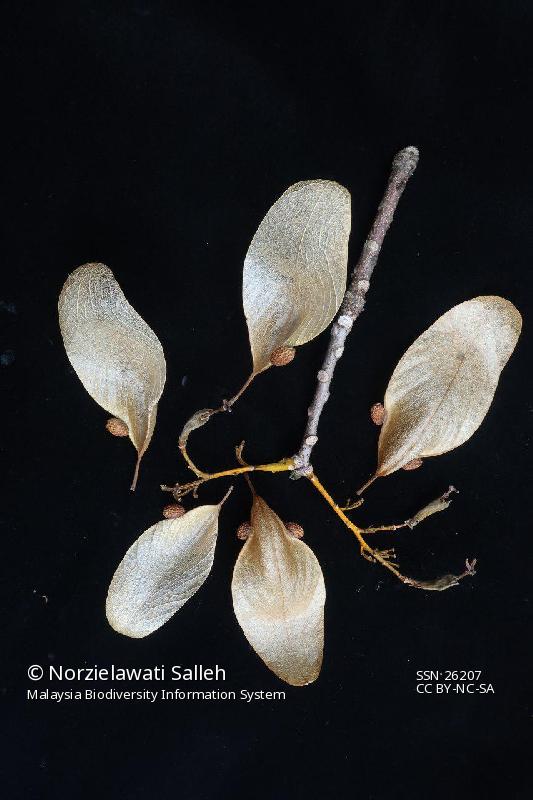
Fruits with 1 or 2 marginal seeds
Firmiana malayana is commonly known as mata lembu in Malay or Bullock’s Eye in English. Firmiana is named after Count K.J. von Firmian (1716-1782), who was the Austrian Governor of Lombardy under the Empress Maria Theresa. The species name, malayana, is the Latin word for Malaya. Firmiana malayana is distributed in Sumatra, Peninsular Malaysia, Java and Borneo (Prawirohatmodjo et al., 1998). The tree is often found in lowland forests, near rivers, forest fringes and mountains, up to 1,200 m altitude (Adnan et al., 2018).
This tree can grow up to 28 m in height with a diameter reaching up to 75 cm. The bark is smooth and silvery-grey, with a pale brown-yellow inner bark. The twigs are smooth and grey-brown with prominent leaf scars. The petioles are 5-20 cm in length and smooth, with caducous (soon dropping off) stipules. The leaves are deciduous; the leaves are shed after the dry season and the tree remains naked for six to eight weeks. The leaves are ovate, often shallowly trilobed, 9-17 x 7-14 cm, usually symmetric, with a shallowly cordate base and acute to rounded apex, pale green to green, papery with an entire margin (Wilkie & Berhaman, 2011; Adnan et al., 2018).
During the period when the tree is devoid of leaves, flowers and fruits will appear for four to five weeks after which new shoots will emerge. Inflorescences of 3-13 cm length are formed in the leaf axils, and covered with dense orange star-shaped hairs. The flower is a 5-lobed long calyx tube, with a bright orange outer surface and bright red inner surface, 15-30 mm in length, 6-9 mm diameter, often recurved. The fruit is boat-shaped, consisting of a follicle with 1 to 4 marginal seeds, pale green turning pale brown and 7.5-10 cm in length (Wilkie & Berhaman, 2011; Adnan et al., 2018).
As the tree has very attractive orange flowers, it is often planted as an ornamental (Wilkie & Berhaman, 2011). It can be grown from seed and planted under full sunlight with moderate watering. Its wood is categorized as non-durable timber. According to the Malaysia Plant Red List 2010 (Chua et al., 2010), its conservation status has still not been evaluated.
